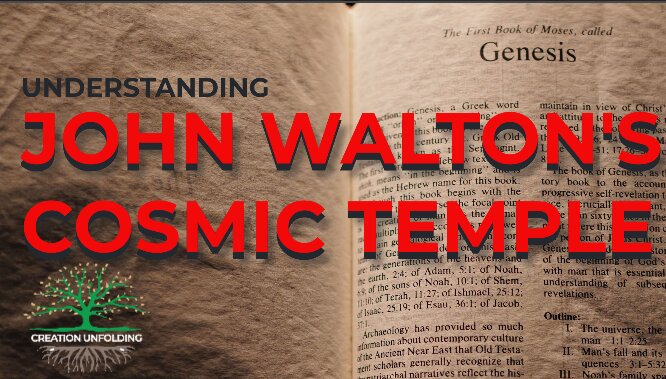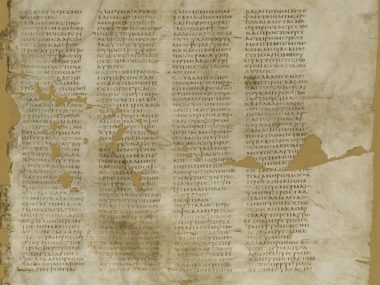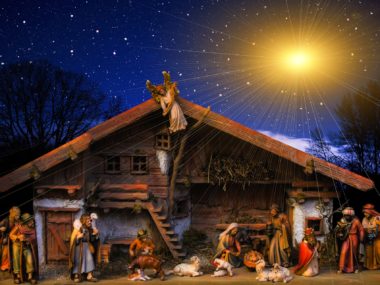In John Walton’s book, The Lost World of Genesis 1, Walton claims that the events of Genesis 1 should be understood only in terms of functionality, where God is assigning already existing material objects with functions. So, for example, when the text of Genesis says, “Let there be lights in the expanse of the heavens” (Genesis 1:14 ESV), we are not to understand this “let there be” in terms of their actual creation. Rather, according to Walton, we must understand this phrase in terms of the function that follows this phrase. So, “Let there be lights in the expanse of the heavens,” and here’s the key, “to separate the day from the night. And let them be for signs and for seasons, and for days and years, and let them be lights in the expanse of the heavens to give light upon the earth.” In other words, God is only interested in assigning a function to that which already exists. In this case, it was His assigning a role for the sun, moon, and stars in terms of time measurements. In fact, according to Walton, the early chapters of Genesis say absolutely nothing about the origin of the material creation which could have been in existence for billions of years.
The following article has been reblogged with permission from Creation Unfolding. The views expressed reflect those of the author, and not necessarily those of New Creation.

Now, you might be asking, why did God sort of “wait” until a few thousand years ago to assign functions to what he’d already created, apparently, billions of years ago? The reason for this is because, and I’ll quote Walton, “The work of the six days is to order the cosmos as sacred space and to prepare it to function as sacred space … for people in God’s image” (Walton 2015). In other words, since God now has image bearers—humans—he needs to “repurpose” the material creation giving material objects new “sacred roles,” different from the roles that physical objects possessed before man appeared on the scene. So, for example, the Sun existed for billions of years for the purpose of warming the earth, but in Genesis 1, God now gives the Sun a “sacred role” by assigning it as a timekeeper for humans. This “assigning” the sun its “sacred role,” however, has, according to Walton absolutely nothing to do with its material origins.
Of course, all deities in the ancient Near East had temples to dwell in and from which to receive worship. So, Walton thinks that God’s giving new, sacred roles to the material aspects of creation is to be equated with God inaugurating His own cosmic temple. God’s “resting” on Day 7 is, therefore, not rest from the work of making physical objects, but signifies the completion of the temple and God’s taking up residence in that temple, ready to receive worship from his image bearers.
So, that’s the gist of Walton’s thesis. Now let’s critically asses its warrants.
Walton has three major premises upon which his overall thesis hangs. The first is that the Bible writers not only borrowed creation myths from their neighbours, but that these Near Eastern creation myths were themselves functional in nature—having nothing to do with material origins. In other words, these ancient peoples were only ever interested in describing the purposes behind material objects and were not interested in how these material objects came into existence. Ergo, Israel’s “myths” followed the same pattern. Walton’s second major premise underscores the framework of Genesis 1 as a whole, where he claims that the context, when understood correctly, demonstrates a functional-only perspective. The third premise has an exegetical component, where Walton claims that the Hebrew verb, bara, translated as “create” in Genesis 1, has nothing to do with material creation, but instead should be interpreted functionally.

So, let’s look at this first premise. Walton claims that Genesis 1 has been strongly influenced by the ancient Near Eastern myths of Babylon, Egypt and the Sumerians. He says this, “Since God did not deem it necessary to communicate a different way of imagining the world to Israel but was content for them to retain the native ancient cosmic geography, we can conclude that it was not God’s purpose to reveal the details of cosmic geography” (Walton 2009, p. 18). In other words, Genesis 1 is filled with ancient Near Eastern myths of creation which, according to Walton, is perfectly ok because the text is not actually concerned with material origins. Walton then claims that these ancient Near Eastern creation myths were themselves driven by a thoroughly functional kind of metaphysic that was not in any way concerned about the material aspects of creation. He then makes the logical step of superimposing this functional-only metaphysic from the ancient Near East onto the text of Genesis 1.
The problem is that many scholars openly take him to task for what they say is a misrepresentation of ancient Near Eastern mythology. Old Testament scholar Richard Averbeck, for example, says this:
“Driving a wedge between material creation as over against giving order to the cosmos by assigning functions or roles is a false dichotomy that cannot bear the weight of the text. And this does not stand up under scrutiny in ANE creation accounts either.”
Averbeck, n.d.
In other words, ancient creation accounts in no way committed themselves to a functional-only metaphysic for explaining creation.
Christian philosopher and theologian William Lane Craig agrees, “Hence, the creation of an orderly system of functioning objects [in ANE pagan myths] involved the coming into being of those objects, not just the specification of functions for material objects that were already present” (Craig 2021, p. 188). As Craig points out elsewhere in his book, part of the confusion seems to be Walton’s conflating two very different ideas—creation ex nihilo and creation ex materia. Creation ex nihilo means to create something out of nothing, creation ex materia is to create something from something else. According to Walton, however, an account is concerned with material origins only if the creation of the matter that makes up that object is clearly described in the account (Walton 2009). Yet how valid is that argument? I might tell you that I made a desk for my office. But do I have to tell you that the four legs and the top were prefabricated, or taking it even further back in time, do I have to tell you that the legs and top came from felled trees? You see, it really doesn’t matter that an object came into existence ex nihilo or through the manipulation of pre-existing matter. Either way, something new was created. This latter point will be very important when we get into the actual text of Genesis 1 in part II.
Understanding John Walton’s Cosmic Temple Series
Understanding John Walton’s Cosmic Temple (Part II)
Understanding John Walton’s Cosmic Temple (Part III) (Coming Soon!)
Learn More About John Walton’s Cosmic Temple
Footnotes
Averbeck, Richard. n.d. The Lost World of Adam and Eve: A Review Essay. Themelios, vol. 40, issue 2. Accessed 05/31/2024, https://www.thegospelcoalition.org/themelios/article/the-lost-world-of-adam-and-eve-a-review-essay/
Craig, William, Lane. 2021. “In Quest for the Historical Adam: A Biblical and Scientific Exploration.” Eerdmans Publishing.
Walton, John, H. 2009. “The Lost World of Genesis One: Ancient Cosmology and the Origins Debate.” InterVarsity Press, Academic.
Walton, John. 2015. “Material or Function in Genesis 1.” BioLogos. Accessed 05/31/2024.












I’ve not read Walton (yet), but it sounds like he is saying “the waters” that the Spirit hovered over refers to the primordial chaos that was refashioned into the created world as we see it today. Hence the material existed.